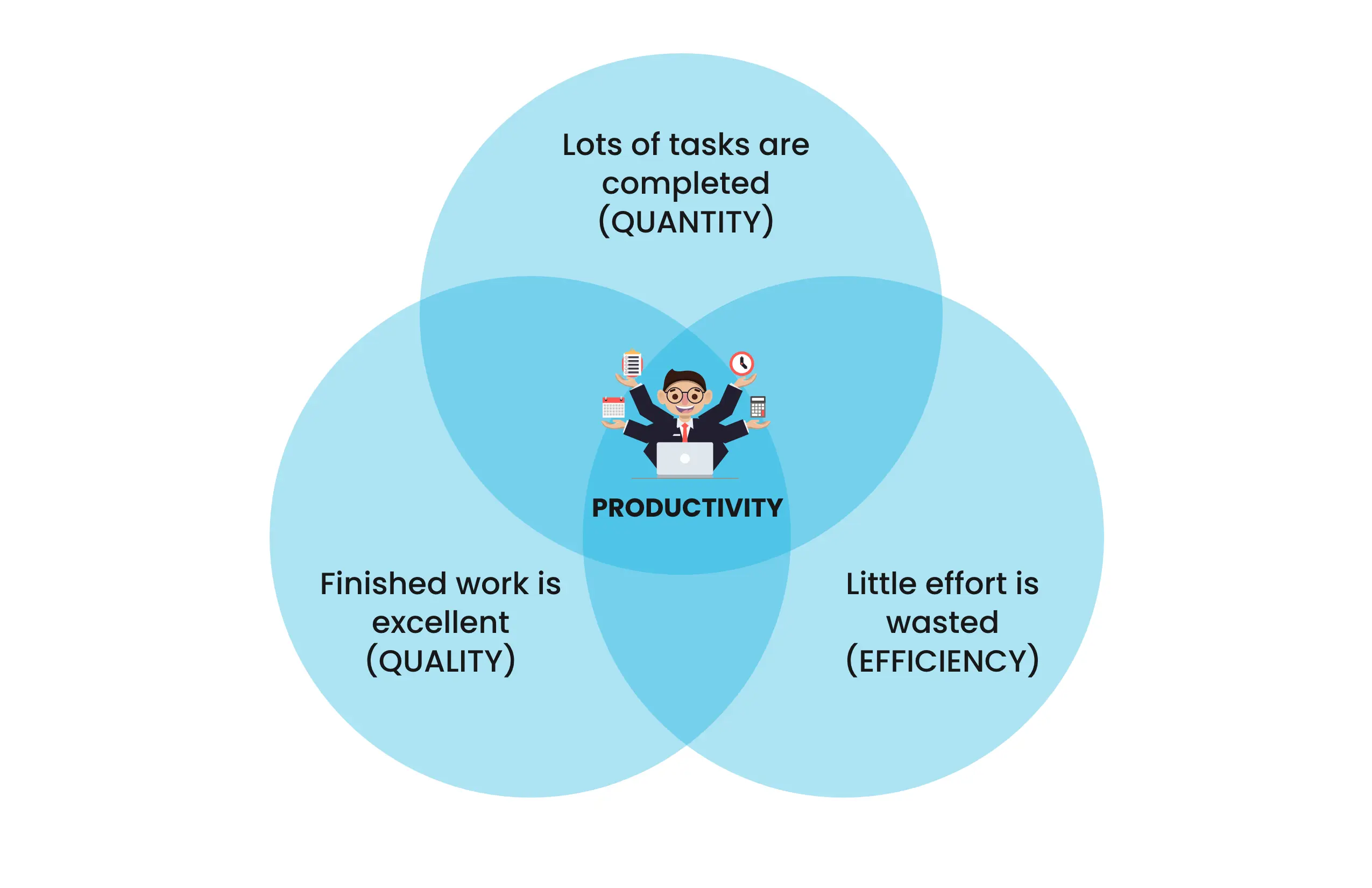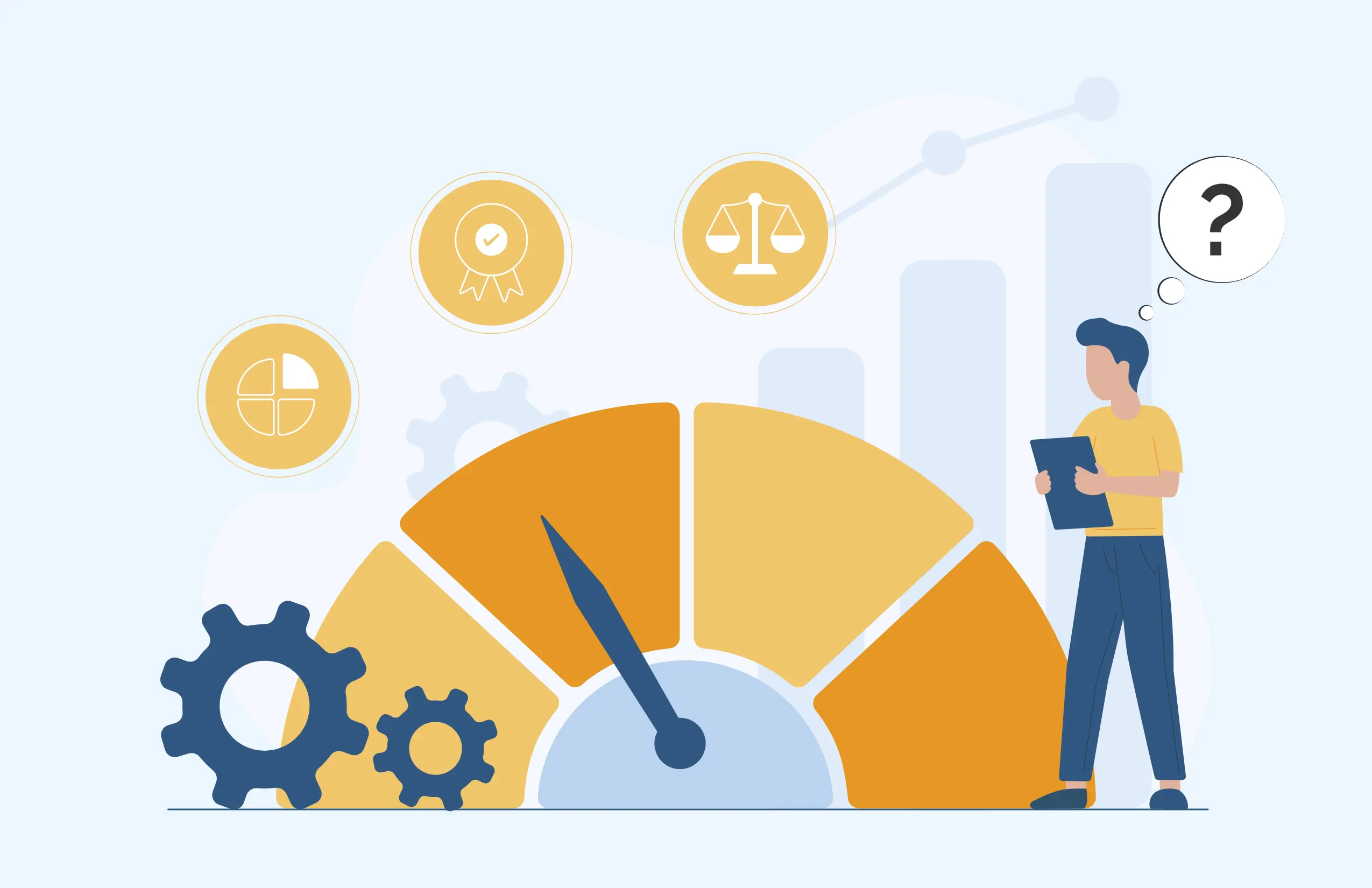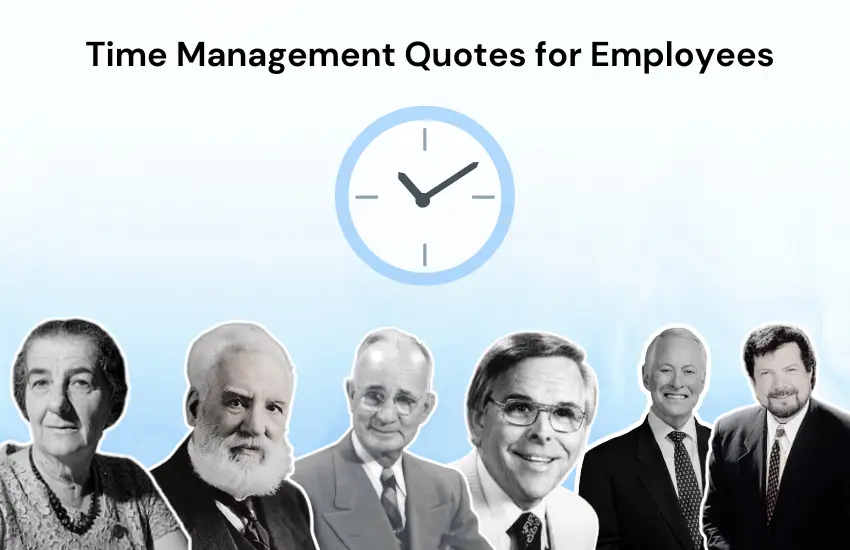
Calculate Employee Productivity for More Capital Gain
Table of Contents
“I work day and night effortlessly, no matter how badly it wrecks my nerves.” – No one openly spits ever!
Every employee tries their hardest to have an image of a perfect employee with a careless lifestyle and impress top hierarchies. And, if you closely observe your employees, it’s highly possible that you find some enthusiasts who are likely the same.
However, don’t take their busiest activity seriously as it does not necessarily sound productive. It’s just a misconception as productivity should be defined by quality work instead of quantity of hours.
For example, your employees’ productivity measure is compared with the quantity of generating a higher number of sales leads that may take them through rushes. In this case, over-engagement and frequent follow-up proposals to everyone can ruin those leads’ purchasing psychology.
And, your calculation won’t reflect the true productivity per employee. So, let’s get to know what your approach should be to rectify it!
“The key to productivity is to rotate your avoidance techniques.” – Shannon Wheeler.
Look Beyond Direct Labor to Calculate & Benefit with Employee Productivity
Back in the day, employee productivity was aligned with one’s direct labor and the set of costs. The reason is enough to spotlight on dismay productivity trends that show:
- Productivity anxiety has shown up in an average of 80% of employees.
- Around 56% of employees feel distracted due to financial distress.
Gradually, perhaps, organizations have changed the way of thinking, or, the concept finds its way to be rhythmed in today’s working culture, where productivity determines how employees add value to an organization.
And, so need you while deciding to measure employee productivity. As a manager or stakeholder, you should prioritize measuring labor dollars per product or service, instead of expense allocation per head that defines one’s wages.
Most importantly, if you can persuade your employees to give their every shot efficiently and sincerely, stressing employee productivity would make more sense and lead you to achieve benefits, likely,
- Evaluating individuals’ performance and knowing their potential contribution towards sustainability, leads to no conflict zone which usually occurs due to one’s credit theft.
- Optimizing and including or eliminating resources, such as events, training, and development, etc., which costs you either for profits or for losses.
- Fueling operations and management by identifying and eliminating unnecessary extended steps, likely, micromanaging employees.
- Acknowledge employees’ efforts with reward and growth trajectory establishment to prevent rates of growing quiet quitters and falling talent retention.
Well, to get these beneficial fruits into your bucket, take your eyes on several considerations that may vary across business verticals, such as,
- Industries and departments
- Benchmarks and goals
- In-office, remote, or hybrid working setup
- Economic conditions
- Environmental impacts
- Technological support and many more.
Remember, employee productivity assessment is the deliberate and strategic investment to identify quantity, quality, and efficiency that moves you closer to meaningful goals.

The 5 Best Actionable Ways to Measure Ultimate Employee Productivity
Quantifying employee productivity benefits is fine, but measuring it appropriately is needed.
The reason behind it is that, on one side, employees have invested their skill, time, and efforts to experience personal and professional growth. And, on the other, the organization has spent money and faith in its budding stars, intending to increase competitiveness within and outside the organization.
So, exactly how can you crack the deal to accurately measure one’s productiveness?
? Use standard productivity formula
The existence of the standard productivity formula has no complexities as it derives the true meaning of productivity by showcasing the simple ratio between the output and input.
And, the formula index addresses how best your company is with the current group of employees, stacks of tidy work arrangement, a bunch of machinery, and so on, and how it turns out the useful goods or services.
For example, your engineering and product team together produce an exceptional product such as a geo-fence attendance tracking system which is worth $70000, by working 1400 hours. Then the standard productive value would be $50/hours.
Well, as it previously said, productivity isn’t the sum of wages and expenses, you must evaluate other factors too to be glad about the hands-on result.
? Never miss to know efficiency rate
| (Standard Labor Hours / Amount of Time Worked) x 100 = Efficiency Rate |
While the standard productivity formula depicts quantification, the efficiency rate shows the quality of work as productivity rate implies the overall impacts of a bunch of people instead of individuals’ capacity.
For instance, your marketing team should stand on 60 standard labor hours to deliver a high quality project but the actual time they invested individually is on an average 40 hours. So, the efficiency rate is to be 150%.
However, if you want to actually compare the productivity standard against individuals’ efficiency, you must look at some different ratios as well, likely,
- Activity ratio: (Expected hours to get the output / Pre-decide actual hours for completion) x 100
- Idle time ratio: (Production downtime / Total labor hours) x 100
- Labor capacity: (Actual working hours / Total budget labor hours) x 100
? Determine the overtime percentage
| (Overtime Hours / Regular Hours) x 100 = Overtime Percentage |
To calculate employee productivity, you can cross-check whether your employees do overtime and showcase being proactive. You may not deny, that the only circumstances to do overtime is either they’re intentionally lacking in being productive or they’re overwhelmed with loads of tasks and fail to be productive.
Therefore, knowing one’s extra hours apart from regular hours is essential and for this, you can go with calculating overtime percentage.
For example, one of your content writers is spending extra 5 hours to craft an informational blog about 8 effective ways to increase medical device sales, while he usually takes 15 hours. It simply shows his 33.33% productivity downtime rate that further pushes you to find the reason behind it and help out in their crisis.
? Count the revenue per employee
| (Total Revenue / Current Number of Employees) = Revenue per Employee |
Now, we’re in the most demanding factor. Almost every organization wants to know how much their hired talents are capable of generating satisfactory revenue that helps a business sustain in the long run.
For a moment, let’s consider, you have 50 employees to run your SMB business and you earn $50,0000 per year as revenue. So, the number of your revenue per employee is $10,000.
Although this measurement doesn’t directly depict the true sense of employee productivity, indirectly it does as many stakeholders and managers make it synonymous to the monetary and ROI benefits. And, may so do you.
? Assess percentage error rate
| (Number of Defective Results / Total Number of Results) x 100 = Error Rate |
Last but not least, passing off the quality and ignoring the error rate can turn off effective employee productivity calculation.
Think of a scenario, where one of your technical writers from the marketing team spent his whole day crafting a white paper based on facial recognition API, likely, Lystface API. But unfortunately, you’ve had to put off your idea to post it due to its lower quality.
Will you acknowledge this as a productive task? Probably not! Therefore, you must certainly know whose outcome remains zero. So, to calculate it, you can try out the formula as it’s given.
Remember, the aforementioned standards are enough to calculate employee productivity, yet they can be varied based on choices. The product-based companies can care about technical parameters to standardize productivity, contrary, service-based organizations can prioritize things apart from development.
9 Key Tips for Employee Productivity Improvement that You Must Try
Timely measuring of employee productivity isn’t all unless the workplace is more humane than robotic. So, when your employees struggling to put their best productive foot forward, you can come to the rescue with a few amazing approaches:
- Give a sense of purpose: Make employees understand the importance and goal of the task along with what makes it matter to them.
- Provide autonomy: Include flexibility to think and implement others’ suggestions or strategies, of course, which one aligns with your company objectives.
- Stop micromanagement: Rather than eagle-watching and interrupting, start trusting the process of how your employees are working and if needed incorporate GPS tracking-based productivity improvements.
- Communicate promptly: Build communication a two-way street to break the ice, where both you and your employees can convey meaningful subjects clearly, frequently, and in a friendly manner.
- Ready for concise feedback: Let yourself as well as your employees spit the truth, no matter the subject or how harsh its reality. However, take care of speech as it shouldn’t cause a bleeding heart.
- Create opportunities: Apart from training and development programs, challenges often work better for growth opportunities. But don’t expect a thank you for this initiative for one who’s already burdened with responsibilities.
- Acknowledge one’s efforts: Celebrate small to big achievements and openly shout out to your employees. Even saying a heartfelt thank you and congratulations in front of everyone can work wonders.
- Offer competitive incentives: Add satisfied compensation and incentive programs that can match the current market value. Thus, you can take your employees away from financial stress and help them focus on what they’re doing.
- Build a positive environment: Free meals or gift coupons aren’t enough anymore. Dealing with disputes, engaging employees, and encouraging self-care and well-being together drive positivity as well as drive productivity.
Proceed with Care & Calculate Employee Productivity with Lystloc
Productivity isn’t refundable!
And, sometimes implementing the right strategies along with technological intervention can take its benefits a bit far. For this, the employee productivity tracking software, Lystloc can serve you better.
Well, it’s not a common productivity software, as it comes with geo-fence location intelligence, task-based time tracking, automated report submission, timely alerts and reminders, and expense management – all that keeps your employees on their toes and your eyes off their activities without intervention.
But still, 82% of employees are crying for not having an appropriate system to track down and calculate their productive hours.
So, be a little smart, head in the right direction to get a Free Demo with Lystloc, and save yourself from the complexities of employee productivity calculation!




